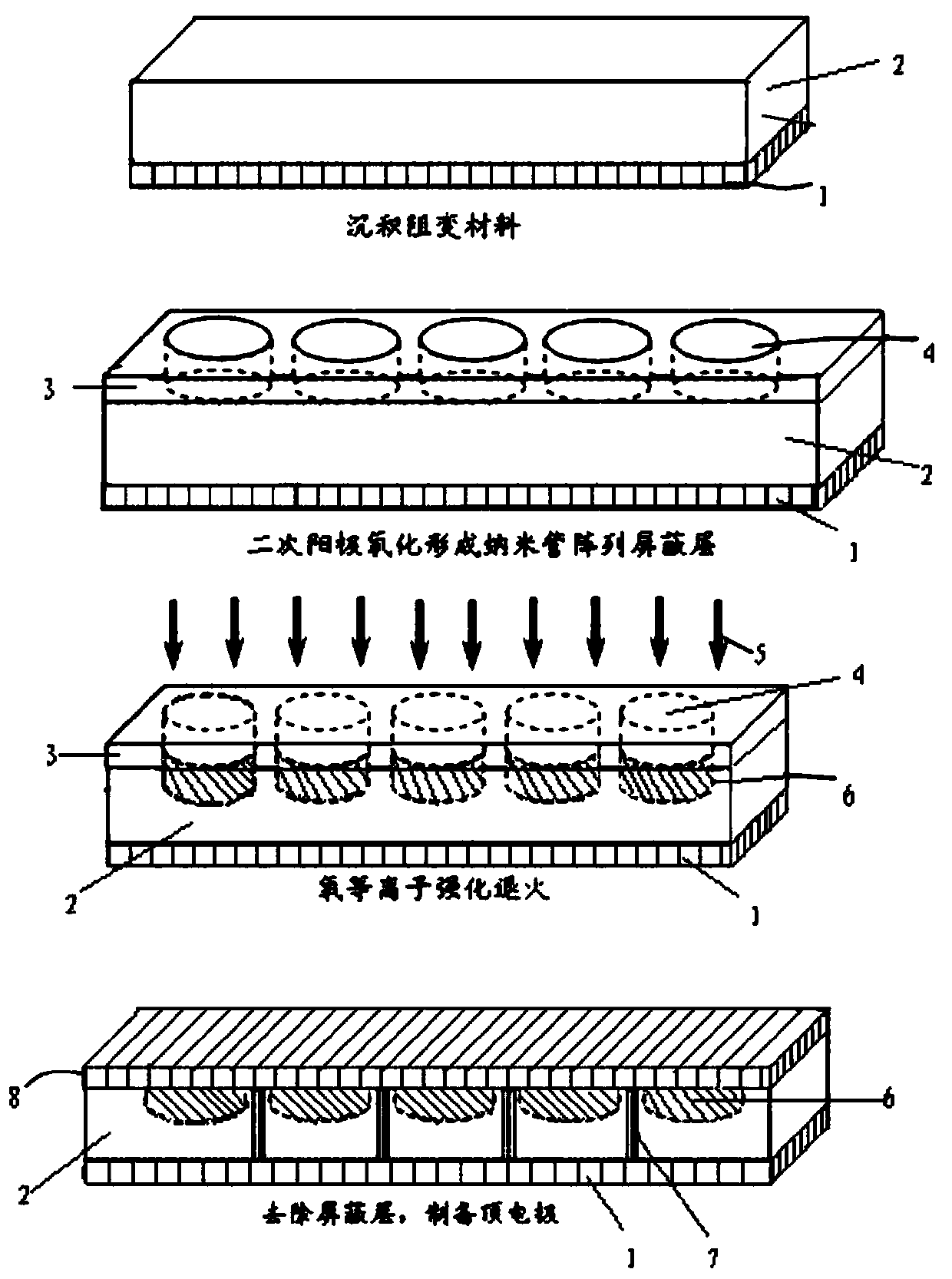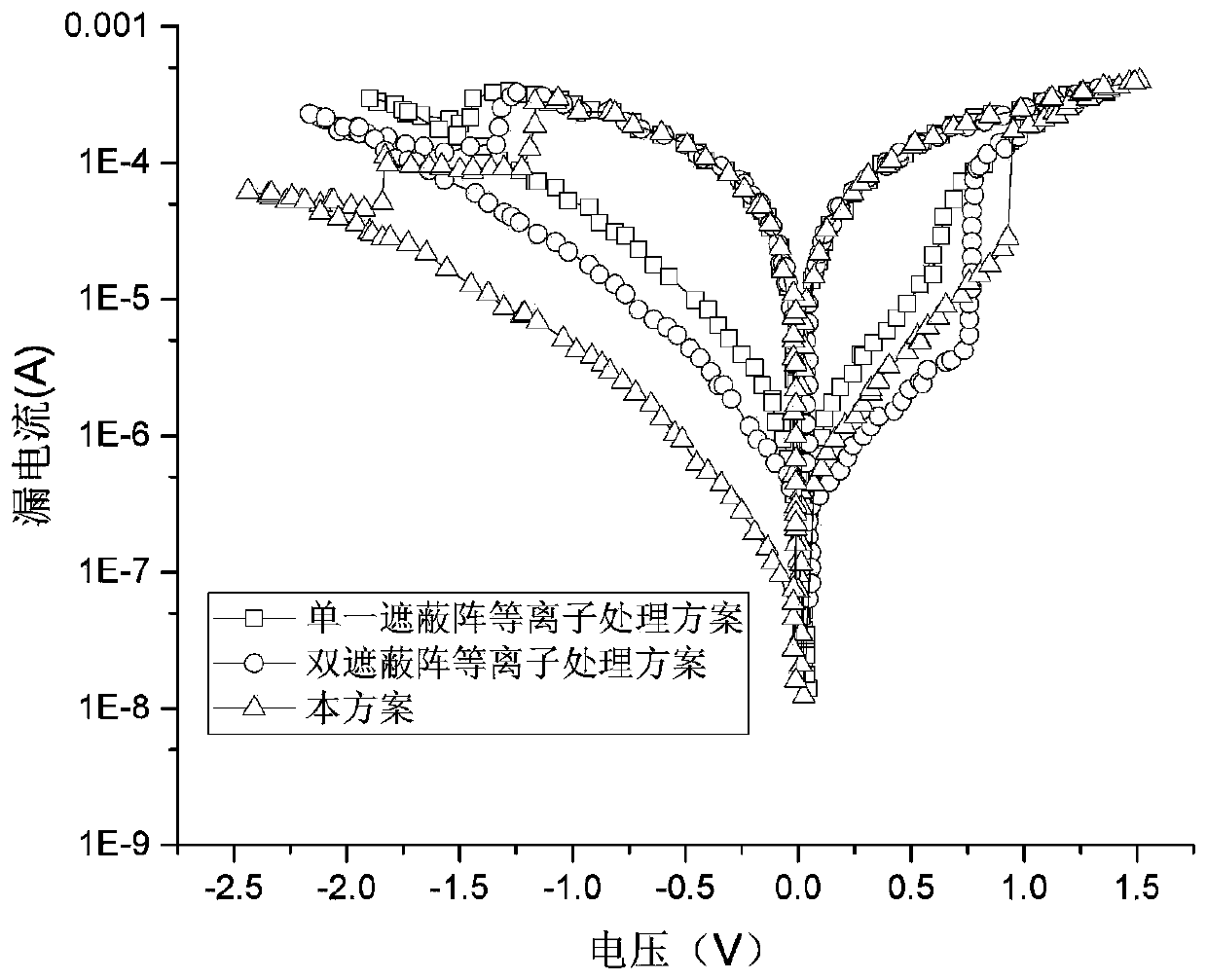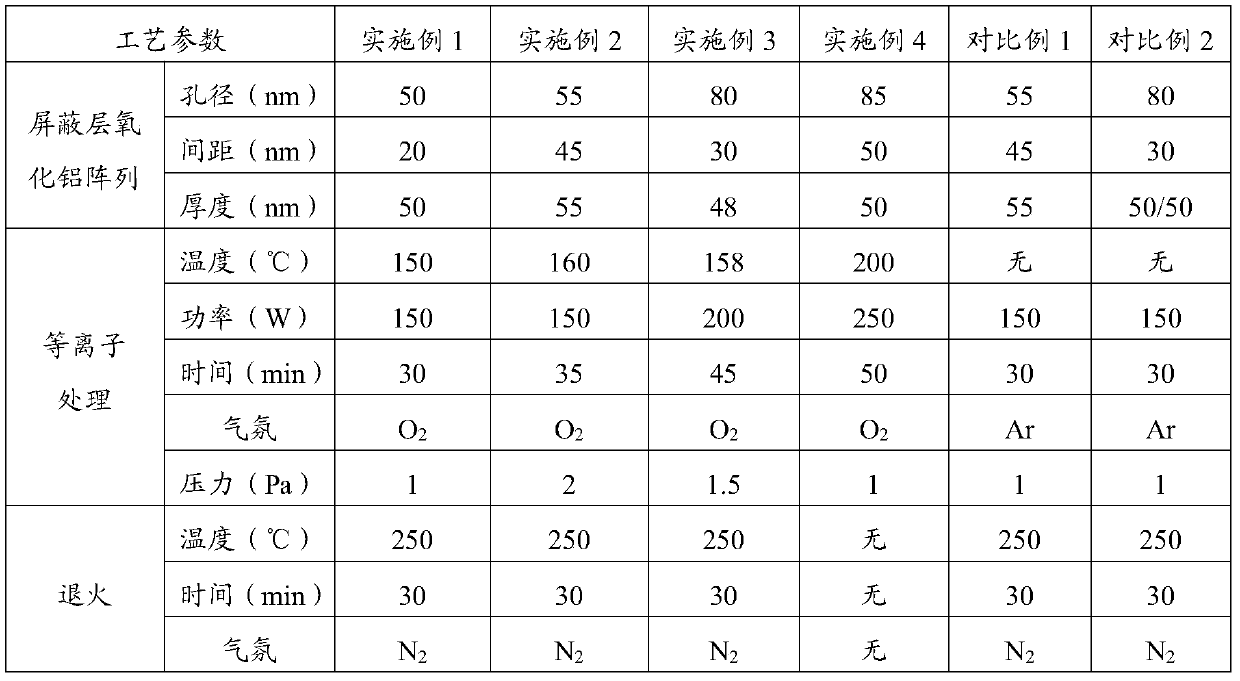A resistive variable memory and its preparation method
A resistive variable memory and resistive variable technology, applied in the field of memory, can solve problems such as misreading and miswriting of stored information, and reducing the reliability of stored data.
- Summary
- Abstract
- Description
- Claims
- Application Information
AI Technical Summary
Problems solved by technology
Method used
Image
Examples
preparation example Construction
[0023] The present invention provides a method for preparing a resistive random access memory, which includes the following steps:
[0024] Deposit resistive material on the bottom electrode to form an amorphous resistive layer;
[0025] Preparing a nanotube array on the amorphous resistive layer to form a shielding layer;
[0026] Performing oxygen plasma enhanced annealing treatment on the overall structure forming the shielding layer to convert the amorphous resistive layer into a highly crystalline array region;
[0027] The shielding layer is removed, and a top electrode is prepared on the surface of the high crystal array area to obtain a resistive random access memory.
[0028] In order to clearly illustrate the scheme of the present invention, the following specific embodiments refer to figure 1 The process diagram shown is explained:
[0029] In the present invention, a resistive material is deposited on the bottom electrode 1 to form an amorphous resistive layer 2. In the pres...
Embodiment 1
[0047] according to figure 1 The schematic diagram of the process flow shown to prepare the resistive random access memory, the specific steps are as follows:
[0048] On the surface of the silicon substrate, a Cr / Cu / Cr metal film is prepared by the DC sputtering method as the bottom electrode of the resistive random access memory; during deposition, the deposition process parameters are controlled as follows: a chromium target is used as the sputtering target, and the substrate temperature does not exceed 100°C (Controlled at 90°C, the substrate temperature in the following steps is the same), sputtering power 100W, sputtering time 3min and using copper target as sputtering target, substrate temperature below 100°C, sputtering power 100W, sputtering time 2min; After deposition, a Cr / Cu / Cr bottom electrode is obtained, wherein the thickness of a single layer of Cr is 10 nm, and the thickness of Cu is 10 nm;
[0049] Continue to use radio frequency magnetron sputtering to prepare a ...
Embodiment 2~3
[0059] The resistive random access memory was prepared in the manner of Example 1, except that the thickness of each material layer deposited and the annealing process parameters are different, which are specifically listed in Table 1.
PUM
| Property | Measurement | Unit |
|---|---|---|
| thickness | aaaaa | aaaaa |
| diameter | aaaaa | aaaaa |
| depth | aaaaa | aaaaa |
Abstract
Description
Claims
Application Information
 Login to View More
Login to View More - R&D
- Intellectual Property
- Life Sciences
- Materials
- Tech Scout
- Unparalleled Data Quality
- Higher Quality Content
- 60% Fewer Hallucinations
Browse by: Latest US Patents, China's latest patents, Technical Efficacy Thesaurus, Application Domain, Technology Topic, Popular Technical Reports.
© 2025 PatSnap. All rights reserved.Legal|Privacy policy|Modern Slavery Act Transparency Statement|Sitemap|About US| Contact US: help@patsnap.com



